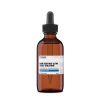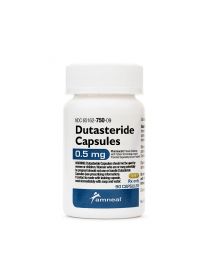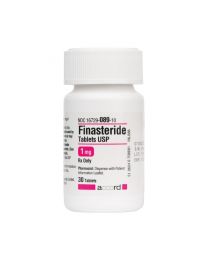- Home
- About
-
- < Products
-
- < By Brand
- Alastin Skincare
- AMP medical
- Biopelle
- CALECIM®
- CareFirst Specialty Pharmacy
- CLn Skin Care
- CO2Lift
- EltaMD
- Empower Pharmacy
- Glowbiotics
- Hillcrest Pharmacy
- HydroPeptide
- ISDIN
- Jan Marini
- Latisse
- MMSkincare
- Neocutis
- Nutrafol
- Obagi
- PCA Skin
- PHOTOZYME
- Qyksonic
- Revision Skincare
- Sente
- skinbetter science
- SkinCeuticals
- SkinMedica
- Upneeq
- VANIQA®
- Virtue Labs
-
- < By Product Type
- Acne Scarring
- Acne Treatments
- Anti-Aging
- Bath and Body
- Brightening
- Cleansers
- Eye Treatments
- Exfoliants
- Hair Care
- Hair Regrowth
- Hand Treatments
- Injectable
- Kits
- Lip Treatments
- Masks
- Moisturizers
- Neck Treatments
- Redness & Rosacea
- Retinoids & Exfoliants
- Scarring & Post-Procedure
- Thin Lashes
- Serums
- Skin Rejuvenation & Antioxidants
- Dietary Supplements
- Toners
- Sun Protection
- Contact Us
- Sign In
- Sign Up
Hair Restore Ultra Scalp Solution ( Minoxidil 5%/ Azelaic Acid 12.5% / Finasteride 0.1%/ Ketoconazole 2%)
Minoxidil
Minoxidil has a direct vasodilatory effect on arterial smooth muscle, causing a reduction in peripheral resistance and blood pressure.
Azelaic Acid
The efficacy of azelaic acid in acne vulgaris is due to an antimicrobial effect and an antikeratinizing effect on the follicular epidermis.
Finasteride
Finasteride is a synthetic 4-aza analog of testosterone that acts as a competitive, specific inhibitor of type II 5-alpha-reductase, an intracellular enzyme that converts testosterone to the potent androgen 5-alpha-dihydrotestosterone (DHT).
Ketoconazole
Like other azole antifungals, ketoconazole exerts its effect by altering the fungal cell membrane.
$123.50
Minoxidil
Oral minoxidil (Loniten) is an antihypertensive agent; topical minoxidil (Rogaine) is used for alopecia. Topical minoxidil is likely effective in producing moderate hair growth in approximately 30% of men and 60% of women with common hereditary hair loss. Lesser growth or a halt in the worsening of alopecia are also frequent outcomes. Due to its potency and adverse reactions, oral minoxidil is used mainly for patients with severe, drug-resistant forms of hypertension. Tolerance to prolonged therapy with oral minoxidil does not appear to be a problem. Although the oral dosage form was originally approved in October 1979 for use in hypertension, minoxidil was first discovered in 1965. In August 1988 the topical formulation was approved for alopecia. After declining Upjohn permission to market topical minoxidil as a non-prescription drug in July 1994, the 2% topical solution was subsequently approved for over-the-counter use in men with alopecia in February 1996. In September 1996, Pharmacia and Upjohn petitioned the FDA to increase the topical solution formulation from 2% to 5%; the higher-strength solution has been shown to elicit a more rapid hair growth response (8 weeks vs. 16 weeks) and to regrow an average of 45% more hair than Rogaine Regular Strength.2The 5% topical solution (Rogaine Extra Strength) for common hereditary hair loss was approved FDA in November 1997. Approval to market a 2% topical solution to women was granted in October 1996. Minoxidil foam (Men's Rogaine Foam) was approved for men in January 2006; potential advantages over the solution formulation include the absence of propylene glycol (potential irritant), the ability to limit the spread of medication, and less time to dry after application.
Azelaic Acid
Azelaic acid is a topical anti-acne agent. Azelaic acid is a naturally occurring dietary constituent (whole grain and animal products) and can be formed endogenously from longer-chain dicarboxylic acids, metabolism of oleic acid, and omega-oxidation of monocarboxylic acids. Azelaic acid is used as a treatment for acne vulgaris and is one of the leading treatments for this condition in Europe where it has been marketed as a 20% cream since 1989 by Schering. The drug is also effective in reducing the number of inflammatory pustules and papules associated with rosacea. Reduction in erythema may occur; however, efficacy has not been established for erythema associated with rosacea without papules and pustules. Azelaic acid has been administered orally and intravenously; however, only a topical formulation is marketed in the United States. The drug was originally FDA approved as a 20% cream for the treatment of acne vulgaris in September 1995; several brand name creams are now available. A 15% topical gel and foam were FDA-approved for the treatment of rosacea in December 2002 and July 2015, respectively.
Finasteride
Finasteride is a 5-alpha reductase inhibitor used to treat symptomatic benign prostatic hyperplasia (BPH), a condition found in the majority of men over the age of 50. Finasteride has been shown to increase and maintain maximum urine flow rate in men with BPH, although less than 50% of men show improvement despite a reduction in prostate size. In a typical patient undergoing treatment for BPH with finasteride (>= 6 months), a 50% decrease in serum PSA concentrations can be expected; however, individual patients may experience varying decreases in PSA values. During treatment, serum PSA concentrations may decrease even in the presence of prostate cancer. If clinicians use serum PSA concentrations as an aid in the detection of prostate cancer in men receiving finasteride, values should be doubled for comparison with normal ranges in untreated men. Any increase from baseline, even if the value is within the normal range for untreated men, may signal the presence of prostate cancer. If clinicians elect to use percent free PSA (free to total PSA ratio) as a marker, no adjustment in PSA values appears to be necessary as the value is not significantly decreased by finasteride.7 In June 2011, a review of two large, randomized controlled trials, the Prostate Cancer Prevention Trial (PCPT) and the Reduction by Dutasteride of Prostate Cancer Events (REDUCE) trial prompted the FDA to alert healthcare professionals of the potential risk of an increased incidence of high-grade prostate cancer in patients receiving finasteride or dutasteride treatment. Results from the PCPT trial showed that men receiving finasteride had a 26% decreased risk of being diagnosed with prostate cancer overall when compared to placebo (p < 0.0001); however, the risk reduction was limited to Gleason score (GS) <= 6 cancers. There was an increased incidence of GS 8—10 prostate cancers with finasteride compared to placebo (1.8% vs. 1.1%, respectively).89Finasteride is also used for treating hair loss in men and has been shown to be effective for mild to moderate hair loss of the vertex and anterior mid-scalp area; efficacy in bitemporal recession has not been established. Finasteride (Proscar) was approved by the FDA in June 1992 for the treatment of BPH. Another finasteride oral dosage form, Propecia, was approved by the FDA in December 1997 for the treatment of male pattern baldness (i.e., androgenetic alopecia). Finasteride is also used investigationally as an alternative agent for treating hirsutism.
Ketoconazole
Ketoconazole is an imidazole antifungal agent and is available as an oral tablet and in various topical formulations. Oral ketoconazole has been associated with fatal hepatotoxicity, adrenal gland suppression, and harmful drug interactions. Due to the potential for severe adverse events, oral ketoconazole should only be used to treat serious blastomycosis, histomycosis, coccidioidomycosis, paracoccidioidomycosis, and chromomycosis infections when no other antifungal therapies are available. The topical formulations are indicated for the treatment of tinea corporis, tinea cruris, tinea pedis, tinea versicolor, mucocutaneous candidiasis, seborrheic dermatitis, and dandruff. Ketoconazole was FDA-approved in 1981.
| Brand | Empower Pharmacy |
|---|
Write Your Own Review
treatment of scalp seborrheic dermatitis and androgenetic alopecia
Minoxidil / Azelaic Acid / Finasteride / Ketoconazole 5/12.5/0.1/2%












